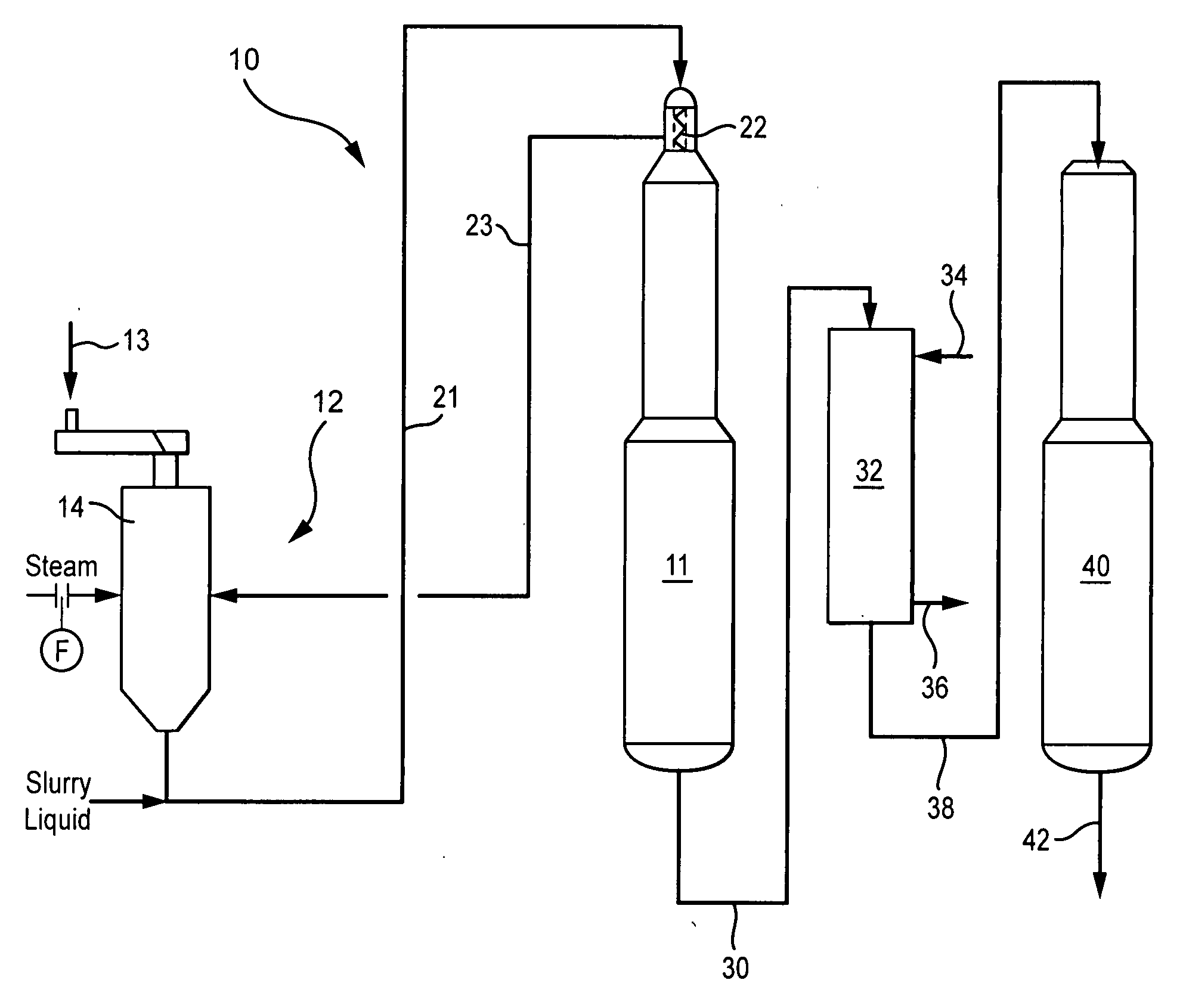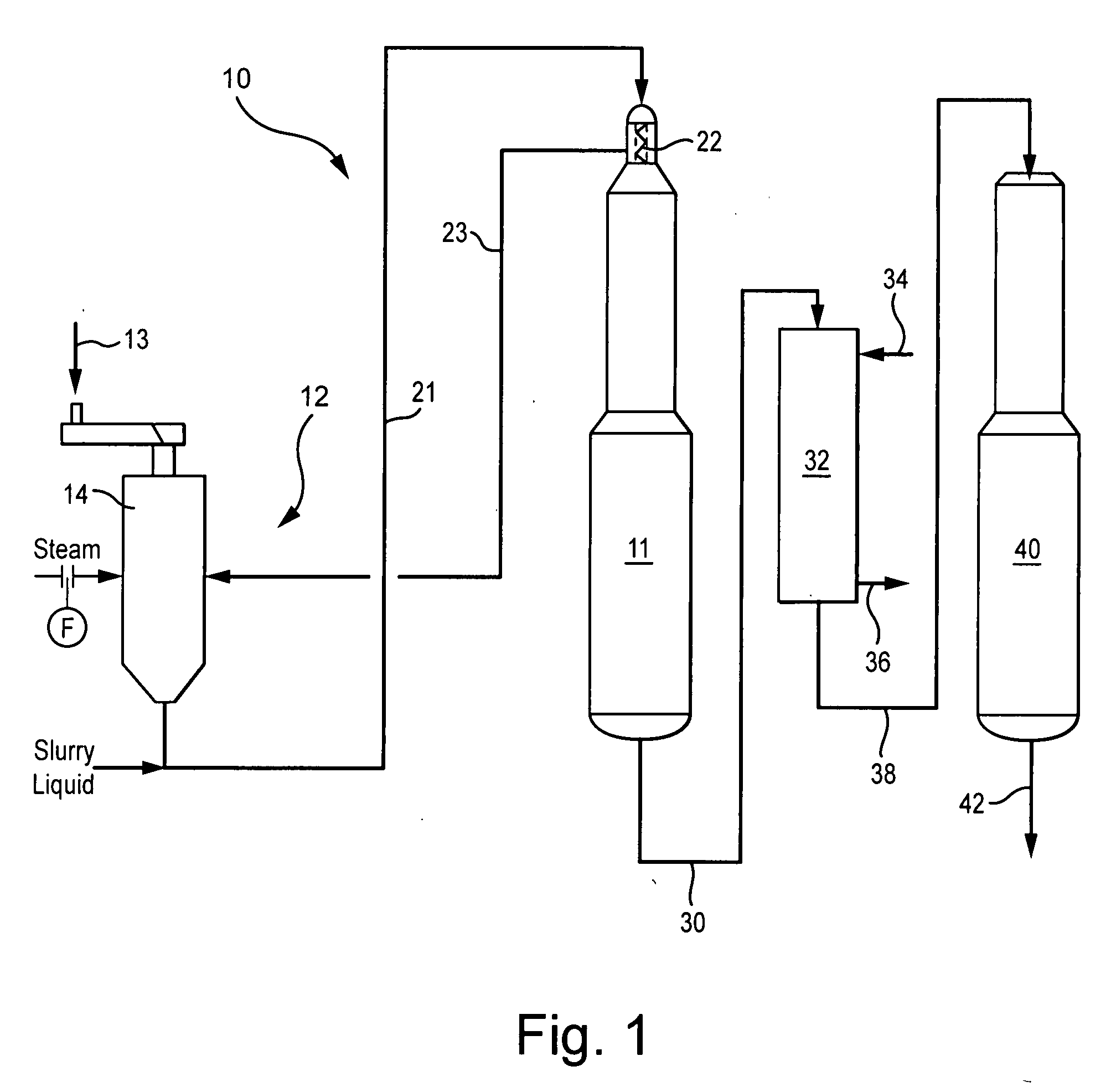Hardwood alkaline pulping processes and systems
a technology of alkaline pulping and hardwoods, applied in the field of chemical treatments, can solve the problems of decreasing the percentage of pulp rejects at a given kappa number, and conventionally not being able to practice, and achieve the effect of reducing the percentage of pulp rejects
- Summary
- Abstract
- Description
- Claims
- Application Information
AI Technical Summary
Benefits of technology
Problems solved by technology
Method used
Image
Examples
example 1
[0031]A hardwood cooking cycle was performed using a total EA (effective alkaline as NaOH) charge of 18% introduced during the impregnation, first cook and second cook stages. The following conditions were used during each of the stages:
[0032]Impregnation:[0033]60% of the total EA or 10.8% EA charged[0034]Impregnation temperature of 110° C.[0035]Time to impregnation temperature=15 minutes[0036]Time at impregnation temperature=30 minutes
[0037]1st Cook Stage:[0038]25% of the total EA or 4.5% EA added at beginning of cook[0039]Cook temperature=140° C.[0040]Time to heat to cook temperature=15 minutes[0041]Time at cook temperature=60 minutes
[0042]2nd Cook Stage:[0043]15% of total EA or 2.7% EA added at beginning of cook[0044]Cook temperature=158° C.[0045]Time at cook temperature=76 minutes
[0046]From this set of cooking conditions, the high temperature in the second stage of the cook gave lower Kappa number and at least 30% lower reject rate than the set of cooking conditions using 140° C...
example 2
[0047]A hardwood cooking cycle was performed using a total EA (effective alkaline as NaOH) charge of 17.5% introduced during the impregnation, first (or upper) cook and second (or lower) cook sequences. The following conditions were used during each of the cook sequences:
[0048]Impregnation:[0049]50% of the total EA or 8.75% EA charged[0050]Impregnation temperature of 110° C.[0051]Time to impregnation temperature=15 minutes[0052]Time at impregnation temperature=30 minutes
[0053]1st (Upper) Cook:[0054]30% of the total EA or 5.25% EA added at beginning of cook[0055]Cook temperature=155° C.[0056]Time to heat to cook temperature=15 minutes[0057]Time at cook temperature=60 minutes
[0058]2nd (Lower) Cook:[0059]20% of total EA or 3.5% EA added at beginning of cook[0060]Cook temperature=156° C.[0061]Time at cook temperature=120 minutes
[0062]A sample of the cellulosic material (wood chips) was taken after impregnation was complete and tested for s-lignin and g-lignin in the laboratory using the...
PUM
| Property | Measurement | Unit |
|---|---|---|
| Temperature | aaaaa | aaaaa |
| Temperature | aaaaa | aaaaa |
| Temperature | aaaaa | aaaaa |
Abstract
Description
Claims
Application Information
 Login to View More
Login to View More - R&D
- Intellectual Property
- Life Sciences
- Materials
- Tech Scout
- Unparalleled Data Quality
- Higher Quality Content
- 60% Fewer Hallucinations
Browse by: Latest US Patents, China's latest patents, Technical Efficacy Thesaurus, Application Domain, Technology Topic, Popular Technical Reports.
© 2025 PatSnap. All rights reserved.Legal|Privacy policy|Modern Slavery Act Transparency Statement|Sitemap|About US| Contact US: help@patsnap.com



